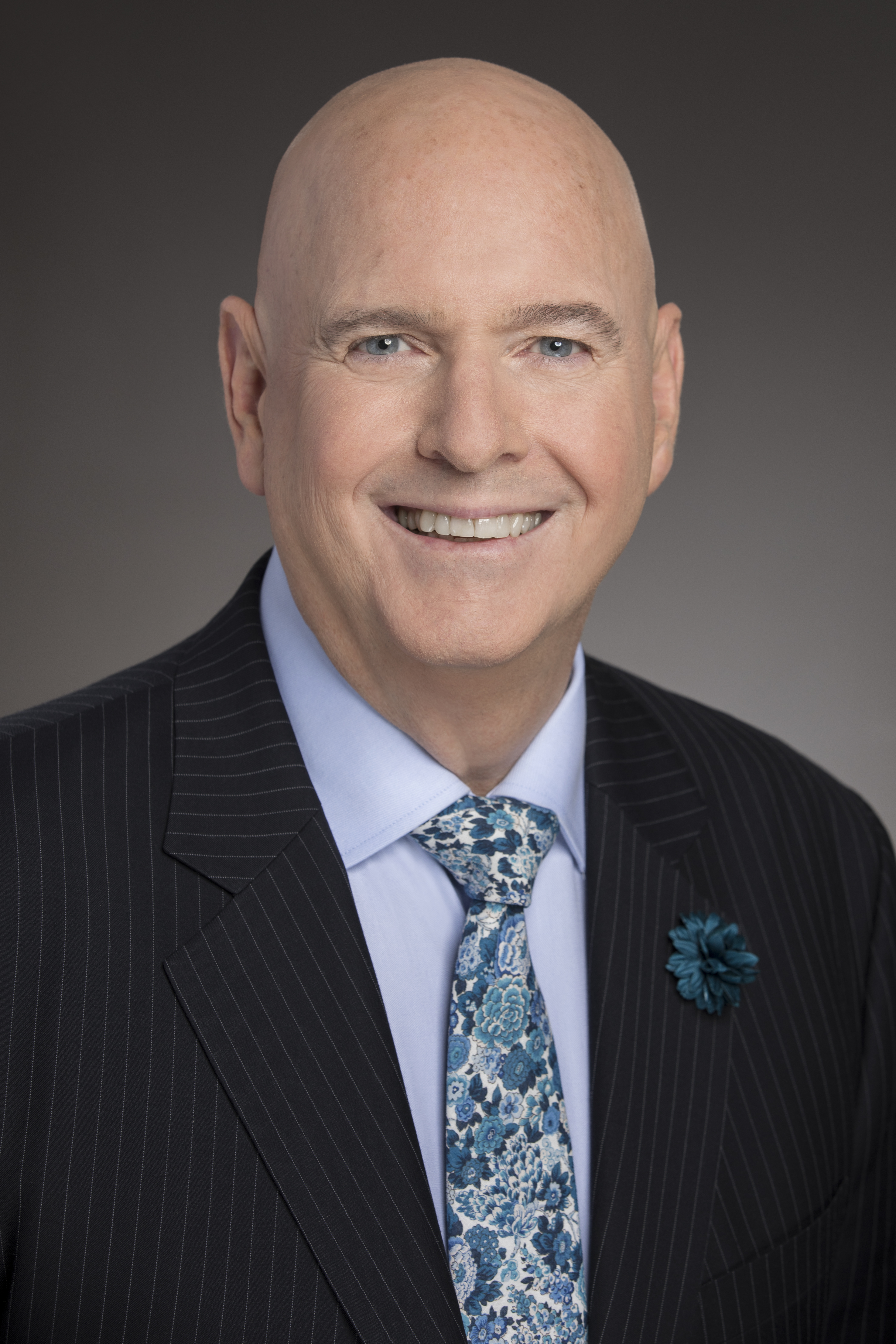Visionary Awardee
As Chief Investment Officer of the California State Teachers' Retirement System for over 20 years, Christopher J. Ailman has overseen the organization during periods of great change, including the banking crises of the 1980s and early ’90s, the Global Financial Crisis, and now Covid-19. Before joining CalSTRS, he served as CIO at the Washington State Investment Board for four years and the Sacramento County Employees’ Retirement System for 11 years. He earned his bachelor’s degree in business economics at the University of California, Santa Barbara, and his CFA certification from the University of Southern California.
At CalSTRS — the largest teacher pension fund in the world and the second-largest pension fund in the U.S. — he leads eight teams across traditional and alternative asset classes. To date, pursuing CalSTRS’s goal of being fully funded — while managing risk, liquidity, and stakeholder expectations — has only reinforced his belief that his role is not just being in investments: “It’s about being an engine for the organization.”
In 24 years at CalSTRS, he has built a culture of collaboration based on collegiality, diversity, and creativity, and we are thrilled to recognize Christopher with The Visionary Award for his contributions to the industry.
The following has been edited for length and clarity.
 What do you think are the most important themes for investors today?
What do you think are the most important themes for investors today?
I think the energy transition is profound: It’s the theme for the next 20 years. There’s still a huge amount of the population that just wants to pretend it’s not real. It’s the dominant theme of transition risk and opportunity.
The second theme would be the coming out of a pandemic and inflation. Our lives have changed so much — remote or hybrid working, wearing a mask, being aware of diseases. On inflation, the federal stimulus was just epic, spending an entire year waiting for recession: Here we are a year and a half waiting for a recession. If you had asked me when I was in my 30s or 40s if interest rates would go to zero, I’d have said, “No.” Now I have an entire generation who assume, “If you’re headed for recession, interest rates go to zero.” The Fed has socialized the cost of a recession and unemployment, but it can’t afford to keep doing so.
“The flip side: We can now earn 5% on cash.”
I recently asked my fixed income person, “What are we earning on cash?” and the person was floored: We’re earning a real yield! I came into the business in 1981, and I remember the inverse yield curve. I had the wind at my back as interest rates declined the entire decade. I can remember the few years when interest rates went up: It was that unusual. But here we are, and rates are investable now and fixed income provides a real return. We realize now we do need cash, and more than just a transactional cash position. It’s an investment option once again.
When you look at the investment landscape over the next couple of years, what do you hope to encourage or accomplish?
Without question, I will be very focused on the energy transition, helping our pension plan, other funds, and other managers to adjust and adapt to the coming change.
By 2030, we all have to be living our lives radically differently, and the next 6-7 years will see massive change in our use of energy. If not, we’ll be dealing with more horrendous weather events and profound changes in human life.
I’m a grandfather now – I look at my grandsons and think of their future, and our oldest daughter is a teacher in our system – and I want the world to be livable when she gets a CalSTRS retirement check. Our generation owes it to the planet, and I want to take the lessons I’ve learned over the past 40 years and try to help people adapt to this change.
What are your thoughts around net zero, sustainability, divestment, and ESG?
I believe all businesses need to be thinking about sustainability and how to ensure their organizations remain viable long-term. There is a lot of public discussion about ESG at the moment. What we are really talking about is long-term risk and opportunity management with a consideration of all possible factors that may impact the financial performance of an organization. Sometimes messaging can get in the way of underlying ideas. That’s why I label net zero as an energy transition. There’s so much conflict with net zero because people don’t want fossil fuels to exist. At this early stage where we’re so far from zero, we need to talk about an energy transition, and it’s electricity first, so we need to improve the way we deliver this.
Regarding divestment, I don’t believe it accomplishes the social change that proponents hope to achieve: We all boycotted Russia, and that didn’t change; we divested out of tobacco, and they had no idea we divested – and I’m not aware it had any impact on smoking rates in this country.
How do you encourage risk-taking and creativity?
When I think about the team and risk-taking, I’m going to focus on leadership, which is all about the culture you create for the investment team.
I firmly believe that this is not my portfolio. I have worked for three trust funds, and none of them belonged to me. The trustees hired me as a money manager. Taking risk is a core part of our job, but within a framework. You have to create a culture that allows people to think outside the box and develop creative ideas. You also have to accept there will be mistakes and challenges. You have to create an environment where that’s allowed and safe, and there’s no blame. We all learn from our mistakes. To me, the culture of a team is a key to its long-term success: Think long term and act long term.
Investment management requires both risk-taking and a lot of organization. How do you cultivate organized risk taking at CalSTRS?
I think culture drives investment alpha. At CalSTRS, we have team-oriented, collaborative culture, and our 20-plus-year track record shows it adds value. Although each asset class has a different personality, we all strive for the same culture.
The pandemic taught me that the key to an organization and its teams is communication. When we went remote, I realized our culture went dormant, and we weren’t sharing our culture with our younger staff. Now we’re over 200 employees, and I’ve learned to break into small teams, and bring us back together – and that’s when the culture comes right back to life. For us, it’s the culture that is the key to both risk-taking and our investment process.
If you penned a letter to your younger self, what would it have in it?
I would say, “Enjoy the passage of time. Slow down, don’t hurry, and enjoy each stage of life for what it brings.”
I think there is a big difference in the generations right now. I realize that investment management is a mentoring business, and you can’t mentor well on Zoom. Seventy percent of communication is nonverbal, and it doesn’t work on screen. You’ve got to be together to pass on the knowledge, so I would also tell my younger self to network, network, and network some more: Don’t isolate.
To discuss the content of this article or gain access to like content, log in or request membership here.

